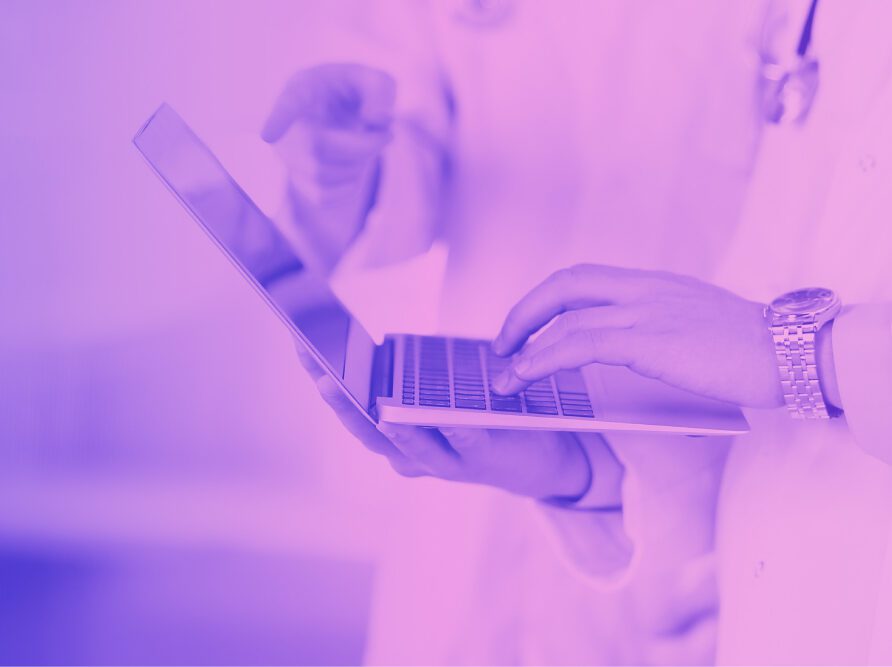Article
What to know about antigen tests for COVID-19
* This content was originally published prior to N. Harris Computer Corporation’s 2022 acquisition of the Allscripts Hospital and Large Physician Practice business segment. Our business is now known as Altera Digital Health.
Since January 18, Americans have been able to go online and order four free COVID-19 antigen tests per household from the federal government. A free call line will also become an option for those who have difficulty ordering the tests via the internet.
During the pandemic, you may have heard that polymerase chain reaction tests, or PCR tests, are the “gold standard” in COVID testing. Why, then, is the government providing antigen tests? Digging into the details offers insight into the value of this testing method.
Antigen tests versus PCR tests: How do they work?
Antigen tests (also known as rapid tests, self-tests and over-the-counter tests) are used to detect proteins on the surface of the virus that trigger an immune response in the body. These are often administered (or self-administered) by swabbing each nostril, the mouth or back of the throat. Fluid is then added to this swab, either in a tube or within a testing card or cassette that may be similar in appearance to an at-home pregnancy test. After a specific amount of time has elapsed, the line or lines on the test indicate a positive, negative or invalid result. Timing varies from test to test, but many can be read in under half an hour.
In a review of 64 studies, researchers found that 72% of symptomatic people and 58% of asymptomatic people with confirmed COVID-19 correctly tested positive for the virus using antigen tests. The tests were most accurate when taken in the first week of experiencing symptoms. Additionally, antigen tests were highly accurate in identifying people without COVID-19, whether symptomatic or asymptomatic (99.5% accuracy and 98.9% accuracy, respectively).
PCR tests, on the other hand, are analyzed in laboratories. First, a specimen is collected by nasal or throat swab or saliva specimen. This may occur at a healthcare facility like a hospital or clinic, or even at a drive-through site. After the specimen arrives at a lab, a technician uses PCR technology to change the virus’s RNA into DNA, if present. This process is known as reverse transcription. From there, a polymerase enzyme is added, which amplifies the sample to produce billions of copies. The lab machine then detects if coronavirus genetic material is in the sample. An individual may receive results in a few hours or a few days, depending on the capacity and processes of the lab where the specimen is analyzed.
These tests are highly sensitive and accurate. PCR tests can reliably detect COVID-19 even when the person tested is asymptomatic and/or has a very small viral load at the time of sample collection due to this process.
Researchers, including those at the U.S. Food and Drug Administration (FDA) and the National Institutes of Health (NIH), are currently working to determine how viral mutations like the Omicron variant affect COVID-19 tests.
I got my antigen test result. Now what?
So, what does the lower sensitivity of antigen tests mean for people self-testing? False positives are rare, and those with a positive test result likely do indeed have COVID-19. Especially for those experiencing symptoms or those with a known exposure, additional testing may not be necessary to confirm the accuracy of the antigen test results. These are quite accurate when people have a higher viral load and are more contagious.
Those who receive a negative result from a rapid test should proceed with caution, though. Someone who is not near peak infection, but is contagious, could have a test that comes back negative (i.e., false negative). They could have COVID-19 but have a viral load that isn’t high enough to meet the test’s threshold to generate a positive result. Also, with self-testing, user/operator error can be higher than it is within a standardized laboratory setting.
If PCR tests are inaccessible to confirm the result, people can continue using antigen tests to increase the confidence of their initial negative test result by serial testing. The Centers for Disease Control and Prevention (CDC) recommends repeat testing with at least 24 hours between tests. Additionally, researchers affiliated with the NIH found that conducting antigen tests and PCR tests every three days were equally effective at detecting an infection.
What are the benefits of antigen testing?
While a single antigen test may be less sensitive than a PCR test, there is still value in this testing method. Unlike PCR tests, antigen tests do not require members of the medical and scientific community to collect specimens, perform testing and communicate results to patients. Given the growing shortage of healthcare workers, antigen tests can help fill testing gaps, especially during COVID-19 surges. Plus, when antigen testing from home, infected individuals avoid spreading the virus in waiting rooms at urgent care facilities, hospitals and other locations.
Costs vary based on insurance, but antigen tests tend to be less costly than PCR tests. Finally, the federal government has taken steps to increase overall testing supply to make antigen tests more readily available. The number of tests on the market increased from 24 million in August 2021 to 375 million in January 2022.
In addition to testing, individuals can minimize their risk of spreading COVID-19 through the preventative measures with which we have all become familiar: getting vaccines and boosters, wearing face masks, staying in well-ventilated spaces, physical distancing and practicing diligent hand hygiene.
For more information on the at-home COVID-19 tests provided by the government, visit https://www.covidtests.gov/.












